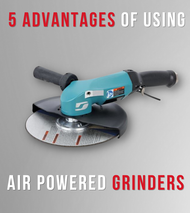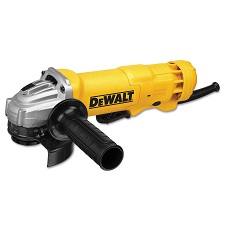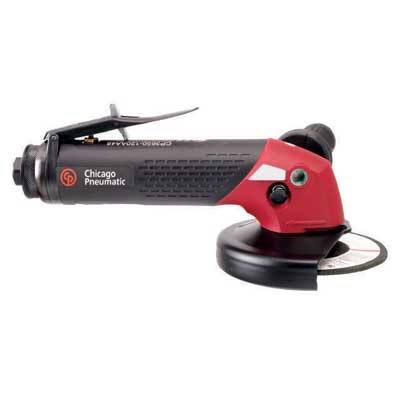5 Advantages of Using Air Powered Grinders Instead of Electric
Posted by Mark Schieber on 11th May 2020
Savvy manufacturers never stop looking for ways to reduce costs and improve productivity... While the up front price of electric power tools is undoubtedly attractive, pneumatic tools offer a lower total cost of ownership and greater throughput over the long term.
Industrial air grinders offer a completely different value proposition than electric grinders. They are engineered for longevity, efficiency, and above all safety. Air powered grinders are gaining in popularity because of the benefits provided in relation to their cost. Adopting air powered grinders results in greater cost savings throughout the life of the tool.
In this article, we explore 5 clear cut benefits afforded by the use of industrial grade pneumatic grinders.
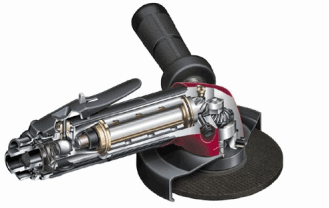
1. No Risk of Electric Shock
Grinders of all varieties are frequently used in environments where moisture, conductive materials, and flammable liquids are present. Damaged cords and wires pose a risk to operator safety resulting from electrical shock. Furthermore, metal fabricators often rely on flammable chemicals, such as acetone, to clean and prep metals prior to welding. Pools of spilled liquids can quickly be ignited by faulty electrical cords. Additionally, vapor concentrations can be higher when working in confined spaces such as those found in the mining and tank cleaning industries. In contrast, air tools require no electricity, and their rotary vane air motors generate no spark. Pneumatic grinders therefore create a safer work environment which decreases the likelihood of generating OSHA violations. Simply put, air tools are safer than electric tools because an air hose will never emit a spark and can be used in wet conditions.
2. Superior Ergonomics and Power to Weight Ratio
Pneumatic grinders offer a better power to weight ratio than electric grinders. Simply put, pneumatic grinders produce more horsepower in a smaller and lighter package. Misleadingly, electric tool manufacturers often classify the power of their tools by the wattage fed into their electric motors (incidentally 750 watts equals roughly 1 horsepower). What's not stated in electric tool specifications is that the power fed into the motor is not the same wattage that arrives to the spindle of the tool. In fact, only 50% to 60% of the rated wattage actually arrives to the abrasive or accessory. In contrast, with pneumatic grinders, power in equals power out. An air motor rated for 1 horsepower will supply that same amount of power to the tool.. To further illustrate power to weight ratio, let's compare two popular 4.5" angle grinders: the Dewalt DWE402 and the Chicago Pneumatic CP3650-120AB45.
|
Dewalt DWE402
|
Chicago Pneumatic CP3650-120AB45
|
| Weight: 6.2 Lbs. | Weight: 4.2 Lbs. |
| Watts: 1320 | Watts: 1725 |
| HP: 1.8 | HP: 2.3 |
|
Power To Weight Ratio: .29 HP per Lb. |
Power To Weight Ratio: .54 HP per Lb. |
In summary, the Chicago Pneumatic Grinder offers nearly twice the horsepower per pound as the Dewalt. What all of this boils down to is an air tool is more efficient for getting the job done fast.
3. Increased Productivity
- Let's put ergonomics and ratios aside for a moment. If increasing worker output is a priority for your operation (and when isn't it?), pneumatic grinders can help you meet your goals. When working with grinders of any type, Revolutions Per Minute (RPM) play a critical role in the material removal equation. Abrasive products (grinding wheels, fiber discs, flap wheels, etc.) are engineered to perform optimally at a specific RPM. Fortunately, modern pneumatic grinders are equipped with a speed control mechanism, (also called a governor), that ensures proper RPM by regulating the air flow to the tool. As the operator places downward pressure on the abrasive, the governor "opens up", increasing air flow to the motor and ensuring the correct spindle speed.
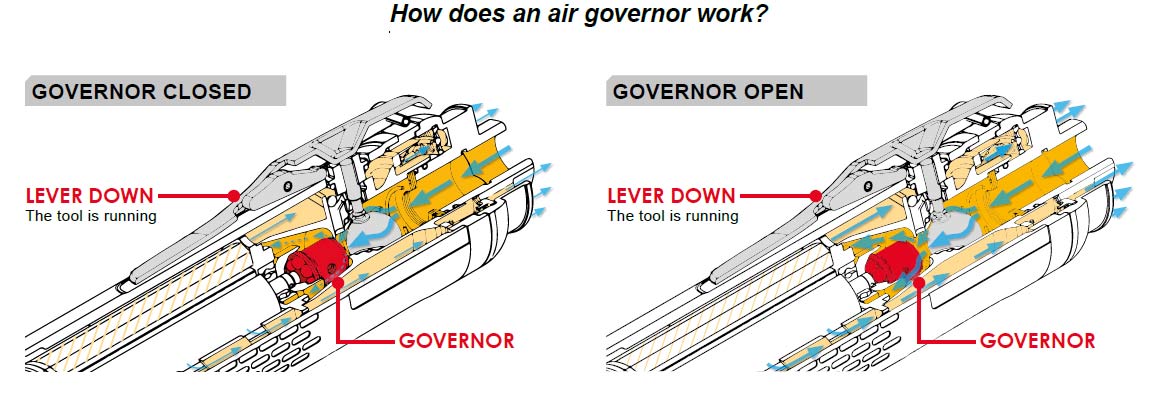
A side note on feed force - Many operators when presented with a new tool will immediately attempt to stall it by placing large amounts of downward pressure on the abrasive. They do this in an effort to test the tools power or torque limitations. Stalling out a power tool not only places unnecessary wear on the tool, but also poses an injury risk to the operator themselves. Furthermore, this practice actually detracts from rather than contributes to material removal rates. Pneumatic grinders and abrasives perform optimally when RPM limits are respected. They are engineered to work together at the right rotational speed. In a non flammable working environment, you can gauge the optimal RPM by noting when the spark stream emitted by the grinder is at its brightest.
4. 100% Duty Cycle + High Performance in Harsh Environments
Mitch Burdick, a Product Manager for Power Tools at Bosch says: "The two biggest threats affecting electric tool life are dirt and and heat - dropping them in water, or baking them under a hot sun doesn’t help either." By their very nature electric motors have a rated duty cycle which must be respected. Without a periodic rest, the heat generated by the motor itself will diminish performance and eventually cause premature tool failure. In fact, for every 4 minutes running, an electric grinder is designed to have one minute of rest.
Furthermore, the generation of particles is inherent in any material removal process. With the open grate style motor compartments required for cooling, electric tool motors are more susceptible to the accumulation of dust and debris. In contrast, Industrial Grade Air Tools are designed specifically for use in foundries, shipyards, offshore oil platforms, power plants, metal fabrication facilities, and petrochemical refining plants. Air tools have a 100% duty cycle, meaning they are designed to run 24 hours a day 7 days a week (when used with a filter regulator lubricator). Air tool housings are made of aluminum or steel, not ABS plastic which makes them more resistant to the impact from repeated drops. Pneumatic grinders can even be used underwater if the exhaust is vented above the surface!
5. Ease of Servicing and Sustainability
An industrial grade grinder is not a disposable piece of equipment and doesn't immediately end up in the landfill like a "disposable" commercial electric grinder. Pneumatic grinders can be tuned up and be periodically rebuilt many times over. The average electric tool maintenance interval is between 60 and 120 hours after which the tool will typically need, at a minimum, a new set of brushes. Comparatively, a garage / maintenance grade air tool averages 200 hours between service intervals while a truly industrial grade air grinder can run up to 2000 hours between tune ups. When the time comes to service your air tools, convenient and clearly labeled kits are available that contain the most common wear parts. Incidentally, If you are too busy to service your air tools, we also offer air tool repair services and can typically fix them for 50% of the cost of a new tool.
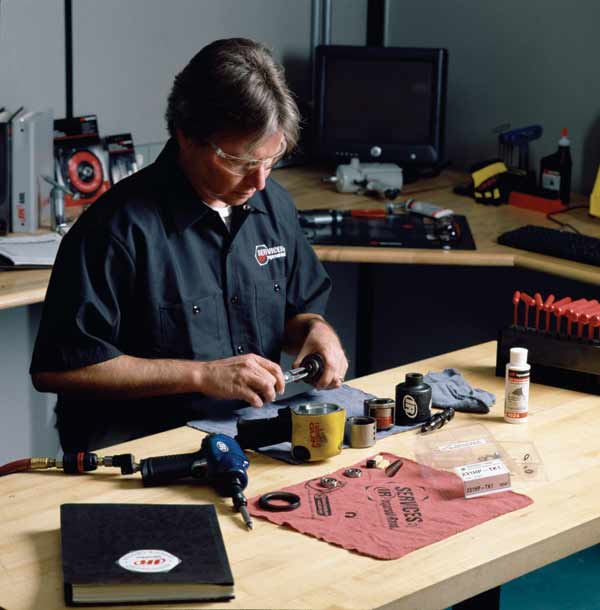
Bottom Line - In conclusion, regardless if you are deburring parts in a fab shop, preparing the hull of a boat for bottom paint, or parting gates and risers in a foundry, everyone's goal is to be more productive. With pneumatic grinders, you'll spend less time grinding, and feel safer when doing so. Additionally, with their 100% duty cycle rating and long service intervals, air tools spend more time on the production line and less time on the bench. While the up front cost of a pneumatic grinder may be slightly higher, it's the total cost of ownership that matters. Air tools are a sound investment that results in significant gains in overall manufacturing productivity.
For help selecting the right air tool for your material removal operation, please contact us at (800) 608-5210 or email info@intlairtool.com


